Chronic Venous Stasis Ulcer
History:
Findings:
At our first encounter, he was noted to have an ulcer on the lateral aspect of his RLE, about 6cm proximal to the lateral malleolus. The ulcer measured 6×4.3cm (25.8cm2), and had indurated, rolled edges, with moderate serous drainage. The ulcer was not foul smelling, and there was only scant fibrinous exudate in the ulcer bed. Due to discomfort, we elected not to debride it at the first visit. In further discussion with him, we also noted that when he sat in his recliner in the evenings, there was an area of pressure and friction caused by the footrest on his recliner which corresponded directly to the position of the ulcer. He was advised to put a pillow under his feet, to minimize the direct pressure on the ulcer by the foot rest.
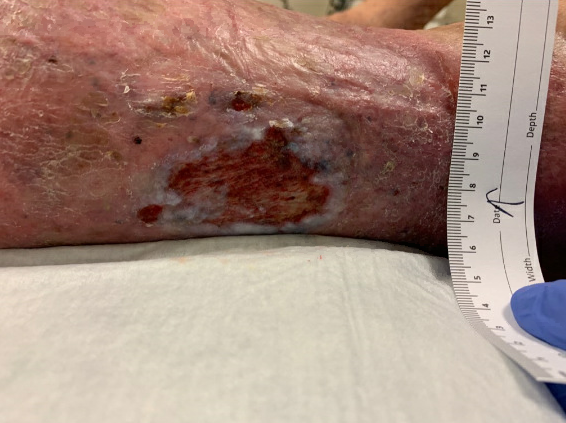
RLE Venous Stasis Ulcer at presentation to our Wound Care Center. Size: 25.8cm2
Diagnosis:
Differential Diagnoses:
Workup Required:
Plan:
Expertise Needed:
Treatment:
Follow Up:
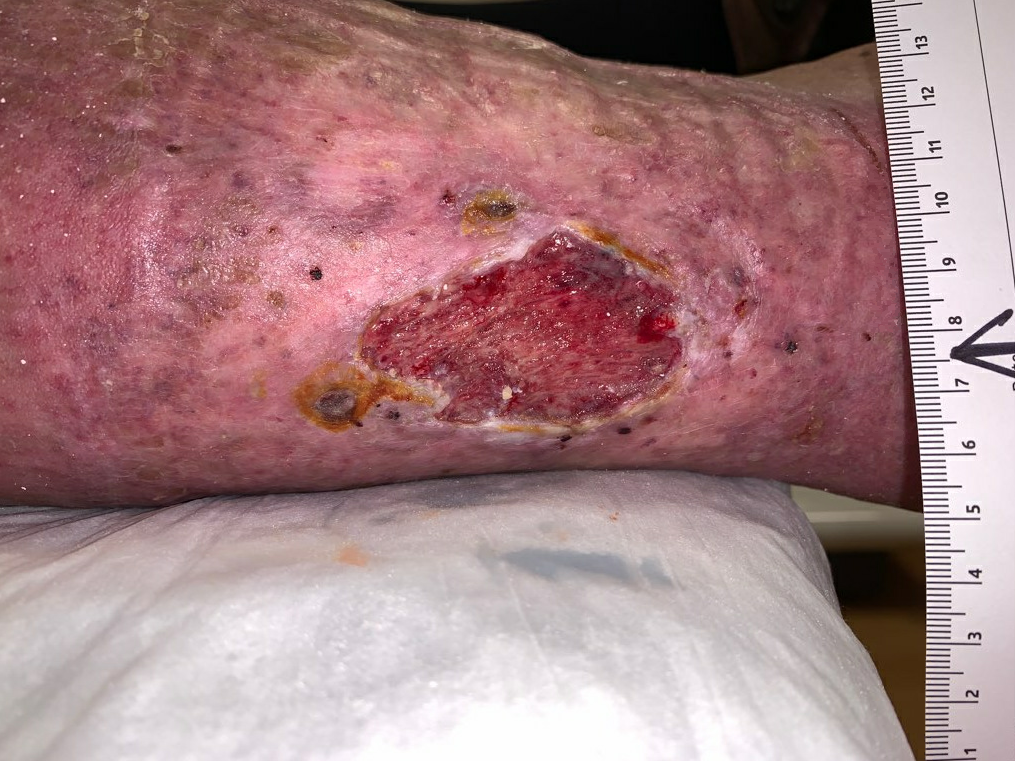
1 week follow up, healthier base with beefy red granulation tissue. Edges are still indurated and rolled. Surface Area 18.5cm2
At our 2 week follow up his pain had improved significantly, but he did complain of discomfort in the first couple of days after the new compression had been applied last time. His pain improved gradually throughout the week, but he was apprehensive about receiving the same level of compression again. At this time we elected to perform a debridement of the edge of the wound, as it was still indurated with rolled edges. We performed an excisional debridement using a sharp curette, only resecting non-viable tissue and slough, and freshening the edge of the ulcer until a slight ooze of blood was encountered. Hemostasis was achieved with gentle pressure. A similar debridement was performed on week 3. Between the debridements during the second and third weeks, the ulcer had been resected back to its original size, but this time with significantly healthier edges and a cleaner ulcer base with healthy granulation tissue in the ulcer bed. Due to his apprehension with a high level of compression, the compression level was adjusted to his comfort using a Spandagrip sleeve, a more mild form of compression. We would have preferred higher levels of compression, if the patient had tolerated this.
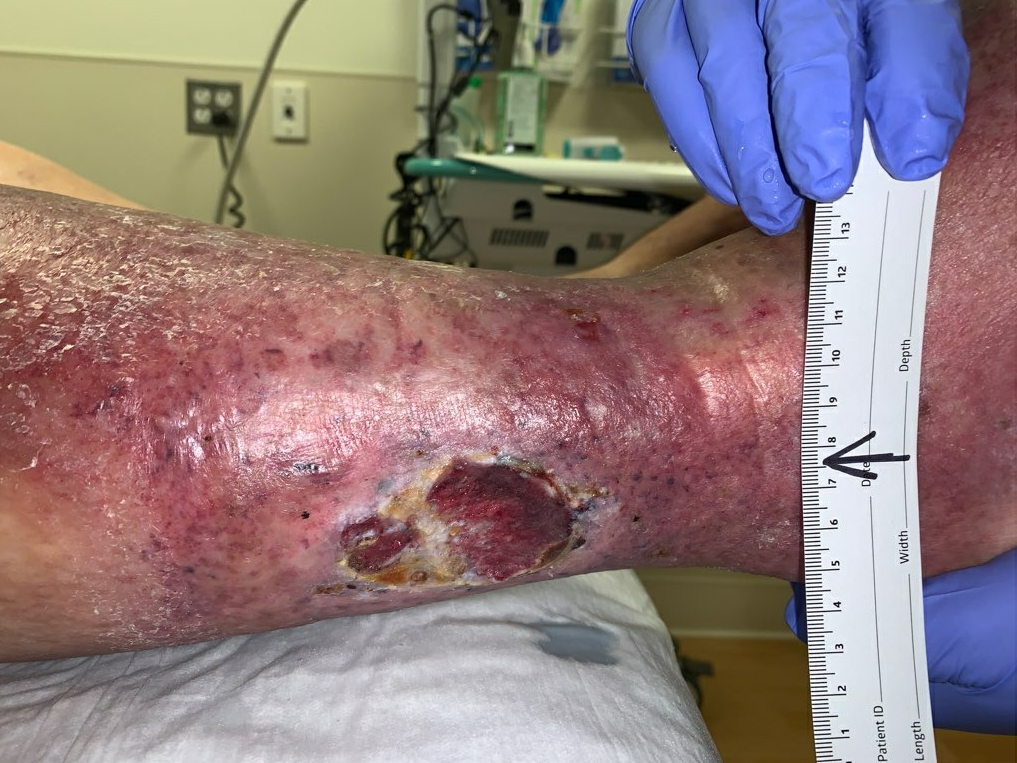
Week 3: Edges are flatter and less rolled, healthy granulation tissue in ulcer bed. Size: 24.3cm2
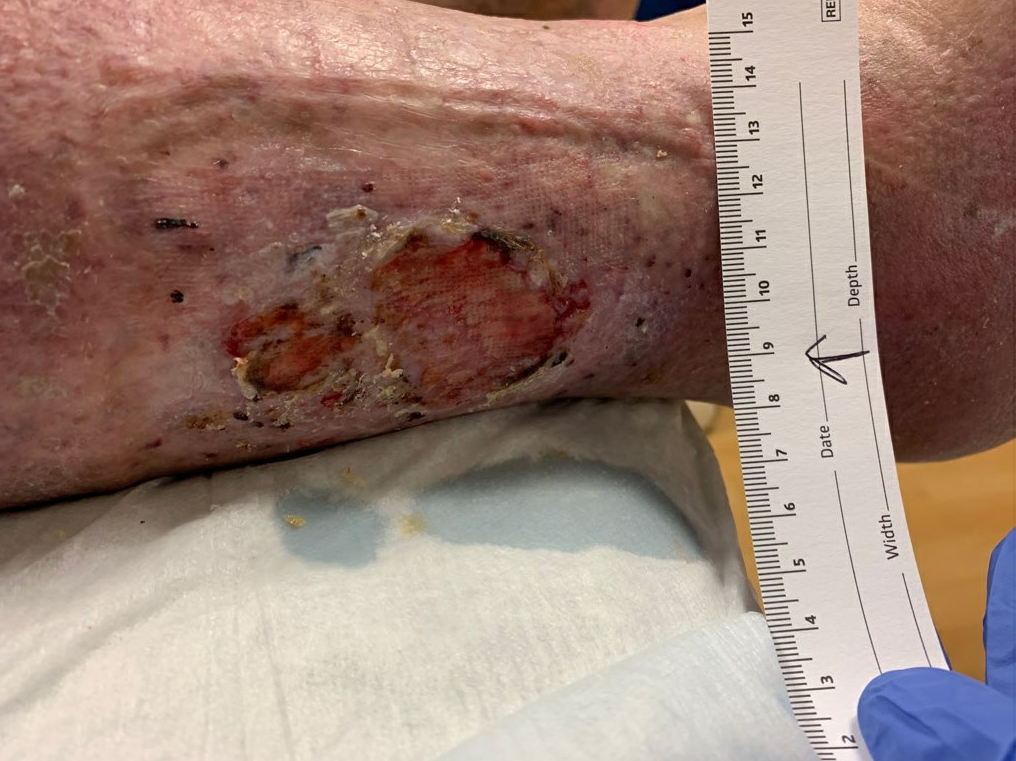
Week 3.5, wound edges are dry and non-viable, thin exudate, gentle debridement will be performed
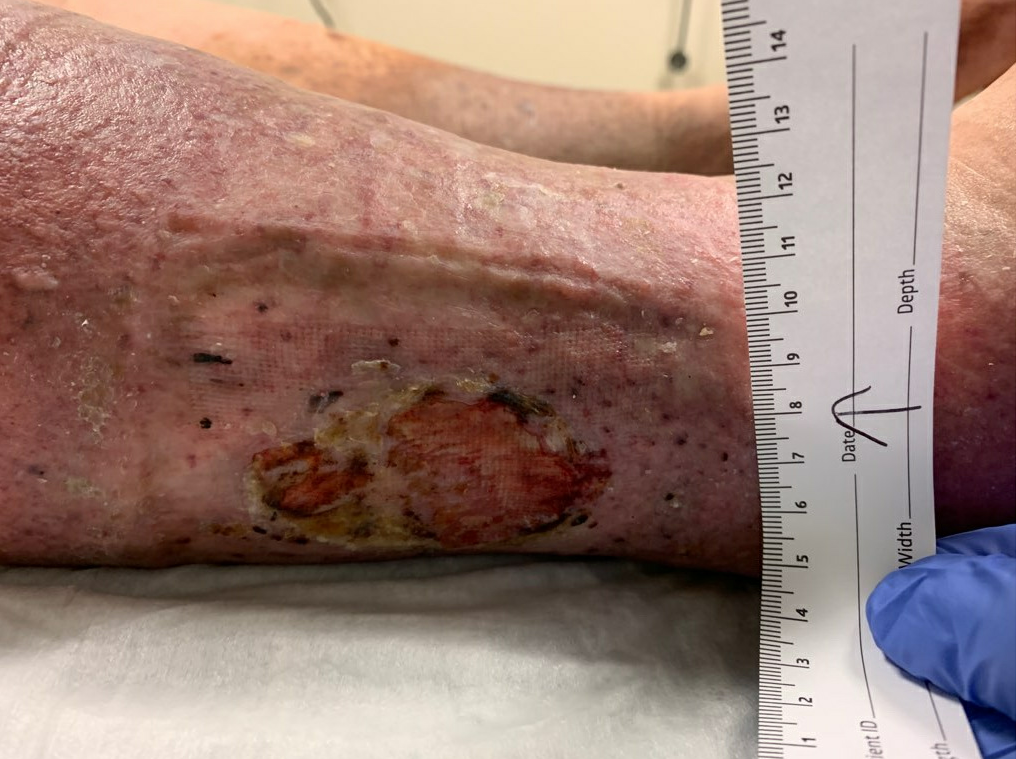
Week 3.5 post debridement, the edges were freshened slightly, and some scant slough was removed
By week 4 he had evidence of epithelialization over approximately 70% of the initial wound bed, and since he had been compliant with his compression therapy, his edema was also markedly improved. As his edema improved, his exudate had significantly decreased, resulting in drier wound edges, rather than the macerated, rolled edges that he started with. To adapt to this, we changed his base layer in his dressing from cadexomer iodine (absorptive) to bactroban ointment (helps to maintain moisture).
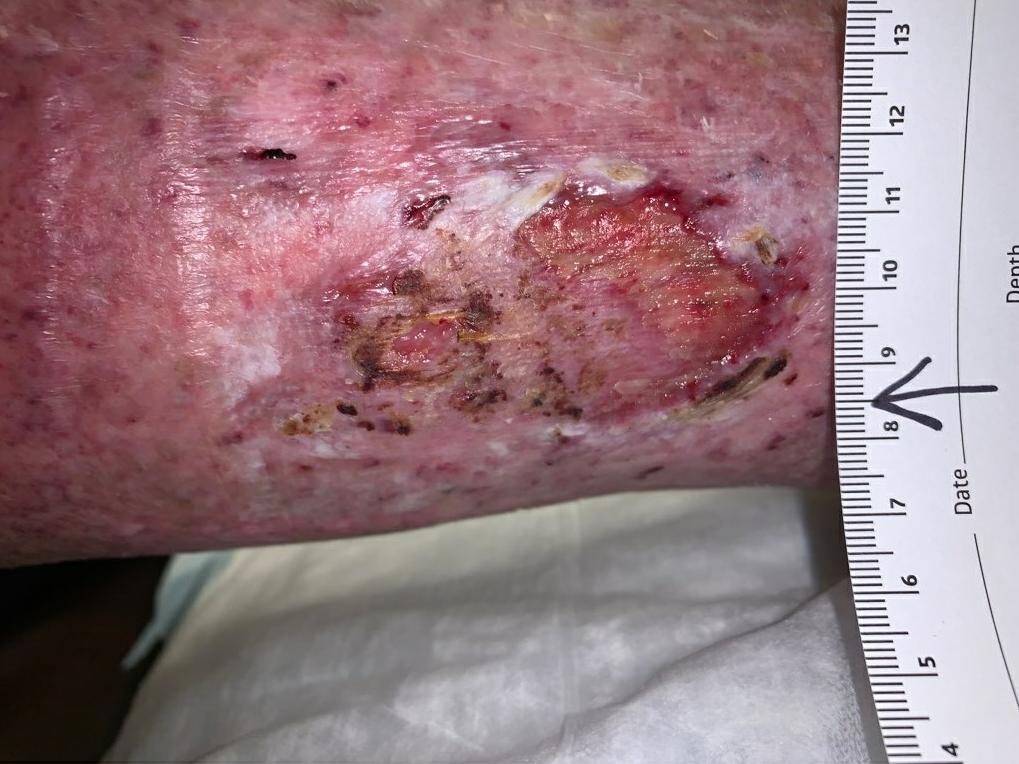
Week 4: Significant progress in re-epithelialization, edges dry and flat
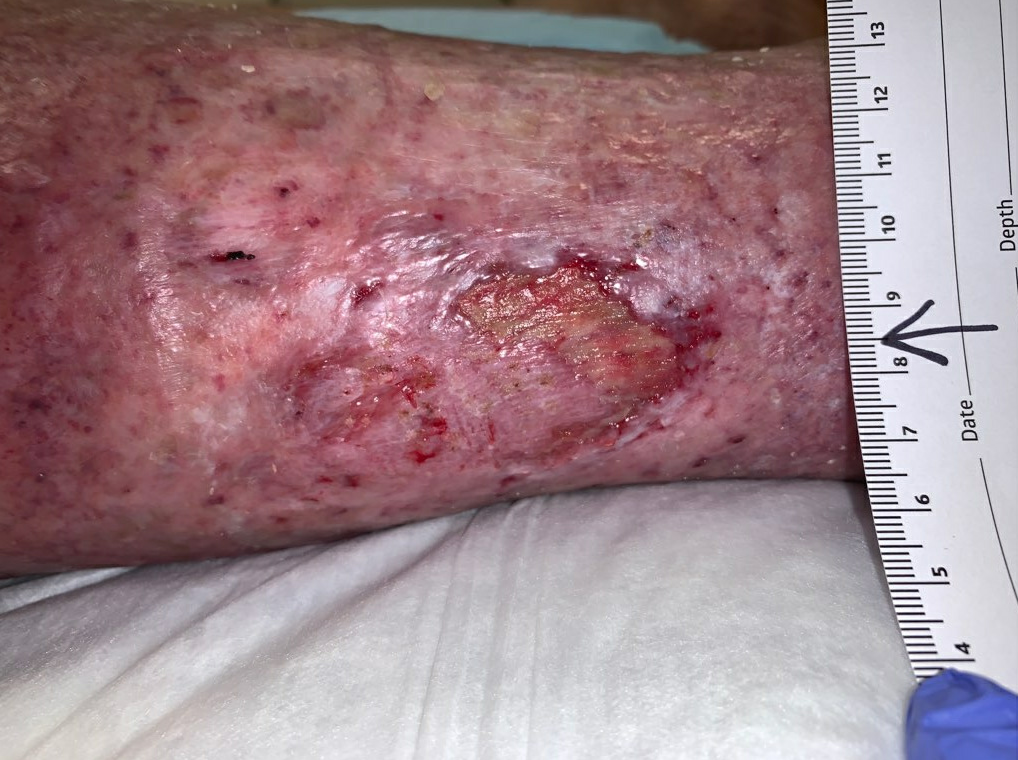
Healthy granulation tissue noted under dried skin edges/eschar after debridement. Size: ~9cm2 open areas
By week 5 we were able to get him a pneumatic compression pump to use at home for 1 hour per day in addition to his compression bandages. He had initially been given 30-40 mmHg calf high compression stockings for use on his left leg only, as his right leg was receiving compression from our wound dressing. He had been compliant with using this compression, but when questioned about willingness to continue long term use, he confessed that he would not be willing to continue using this level of compression indefinitely, as it was uncomfortable during the day. To improve his likelihood of compliance, we changed his compression prescription to 20-30 mmHg compression stockings, which he found significantly more comfortable, and he stated that he was willing to use these indefinitely, as we had continued to reinforce the importance in maintaining compression therapy forever, as this was the best way to prevent recurrence of his chronic stasis ulcer. He also agreed to continue using the compression pump nightly. He continued following up 1-2 times per week, and his wound received more gentle, serial debridements for the purpose of removing slough and freshening the edge of the ulcer.
By the 6th follow up week, he had made significant improvement in the size of the ulcer. He also denied any significant discomfort, both at baseline and with wound care and applying compression.

Ulcer was significantly smaller with healthy epithelium covering most of the ulcer bed. Size: 3.5cm2
As his pain had improved significantly, we resumed Coflex Lite as his primary form of compression. We also switched his Bactroban Ointment for Santyl, to allow for enzymatic debridement of the minimal slough that was still present in the wound. While we did not repeat a culture of the ulcer bed, we believed that the colonization had been adequately addressed by this time. His follow up by week 8 demonstrated nearly complete healing, with less than 3cm2 of surface area left, and evidence of new epithelialization over most of the remaining area.

Week 8: Ulcer bed is healthy, there are small islands of epithelium scattered among the remaining open area. Size: <3cm2
His ulcer was noted to have fully re-epithelialized at his 9 week follow up. His edema had markedly improved, there was only trace edema remaining. He was counseled at this time to maintain his compression therapy with stockings (20-30 mmHg calf high) forever, as this is the single best way to prevent recurrence. He should wear his stockings during the day (~12 hours at least), and remove them at night when he was able to sit and elevate his feet. He was advised that physical activity was also helpful in preventing edema, in combination with compression therapy. He was instructed to return early if another wound developed, as he remains at high risk for developing future chronic wounds.
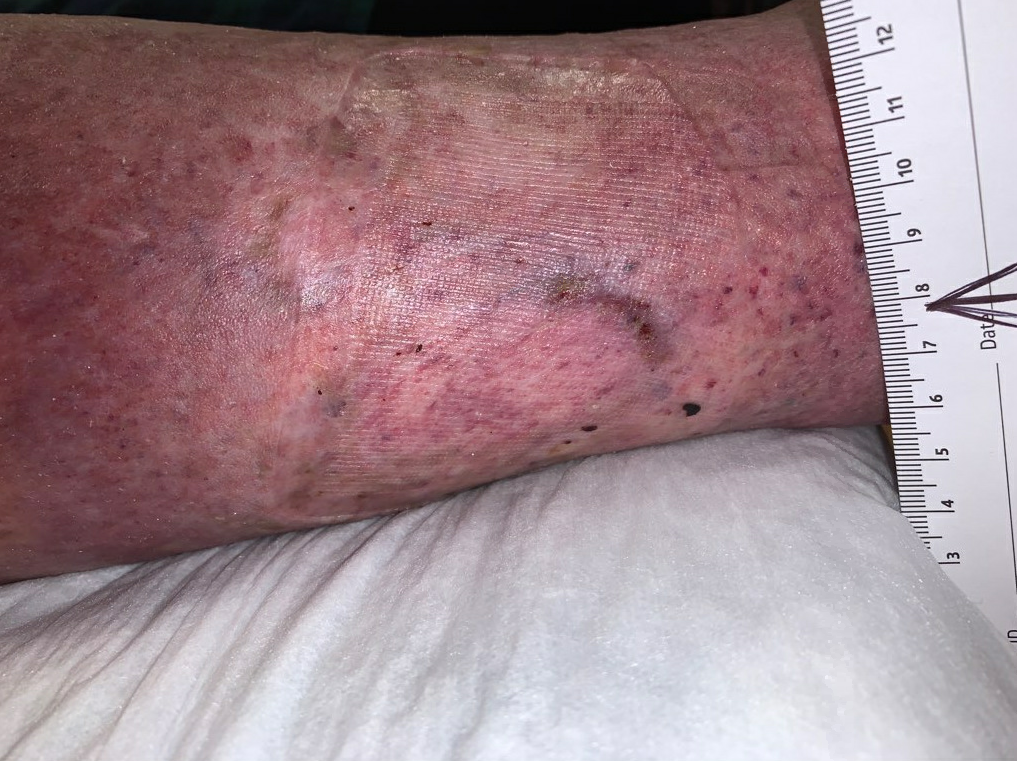
9 Weeks: Full Re-epithelialization

